
Catocala is a generally Holarctic genus of moths in the family Erebidae. The genus was erected by Franz von Paula Schrank in 1802. The moths are commonly known as underwing moths or simply underwings. These terms are sometimes used for a few related moths, but usually – especially when used in plural, not as part of a species name – they are used to refer to Catocala only.
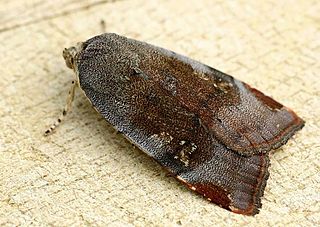
Noctua is a genus of moths. They have dull, cryptic forewings and often very bright hindwings. These are hidden under the forewings when the moths rest, leading to their common name of yellow underwings. They are not particularly closely related to the "true" underwing moths (Catocala) though, apart from both being Noctuoidea. They are good fliers.

John Henry Leech was an English entomologist who specialised in Lepidoptera and Coleoptera.

Catocala fulminea, the yellow bands underwing, is a moth of the family Erebidae. The species was first described by Giovanni Antonio Scopoli in his 1763 Entomologia Carniolica. It is found in central and southern Europe, east Asia and Siberia. The xarippe lineage has been proposed to be a distinct and valid species in its own right, instead of being only subspecifically distinct.

Catocala promissa, the light crimson underwing, is a moth of the family Erebidae. The species was first described by Michael Denis and Ignaz Schiffermüller in 1775. It can be found in Europe and Anatolia up to Armenia.

Leptocybe invasa, the blue gum chalcid wasp or eucalyptus gall wasp, is a chalcid wasp which is the only species in the monotypic genus Leptocybe in the subfamily Tetrastichinae, of the family Eulophidae. It is a gall wasp which causes the formation of galls on a number of species of Eucalyptus, it was described in 2004 after galls were found in river red gums in the Mediterranean and Middle East and has since been found to be a widespread species where its host trees are planted. It is indigenous to Australia.
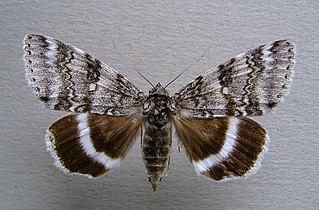
Catocala relicta, the white underwing or relict, is a moth of the family Erebidae. The species was first described by Francis Walker in 1858. It lives in southern Canada, from Newfoundland to Vancouver Island, south to Missouri, and Arizona.

Catocala obscura, the obscure underwing, is a moth of the family Erebidae. The species was first described by Ferdinand Heinrich Hermann Strecker in 1873. In Canada it is found in southern Quebec and Ontario and in the United States it is found from Massachusetts and Connecticut south to North Carolina, west to Mississippi and north to Iowa, Illinois, Ohio, and Michigan.
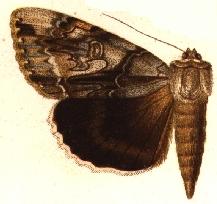
Catocala vidua, the widow underwing, is a moth of the family Erebidae. The species was first described by James Edward Smith in 1797. It is found in North America from southern Ontario, into Maine, New Hampshire and Connecticut, south at least to Tennessee, Georgia and Alabama, west to Texas and Oklahoma, and north to Wisconsin.

Catocala abacta is a moth of the family Erebidae. It is found in Asia Minor.
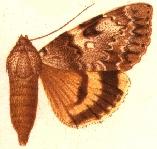
Catocala intacta is a moth of the family Erebidae. It is found in Japan and Taiwan.

Catocala columbina is a moth of the family Erebidae. It is found in Sichuan, Zhejiang, Taiwan and Japan.
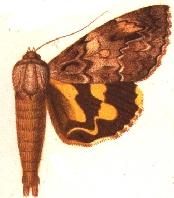
Catocala butleri is a moth of the family Erebidae first described by John Henry Leech in 1900. It is found in western China.

Catocala sordida, the sordid underwing, is a moth of the family Erebidae. The species was first described by Augustus Radcliffe Grote in 1877. It is found in North America from Saskatchewan east to New Brunswick and Prince Edward Island and south through Maine and Connecticut to Florida, west to Texas and north to Manitoba.
Catocala separans is a moth of the family Erebidae. It is found in Russia (Primorye), Korea and Japan.
Catocala puella is a moth of the family Erebidae first described by John Henry Leech in 1889. It is found in northern China and Korea.
Catocala aenigma is a moth in the family Erebidae first described by Leo Sheljuzhko in 1943. It is found in south-eastern Siberia.

Catocala lupina is a moth in the family Erebidae first described by Gottlieb August Wilhelm Herrich-Schäffer in 1851. It is found from south-eastern Europe to south-western Siberia, Asia Minor and Transcaucasia.








